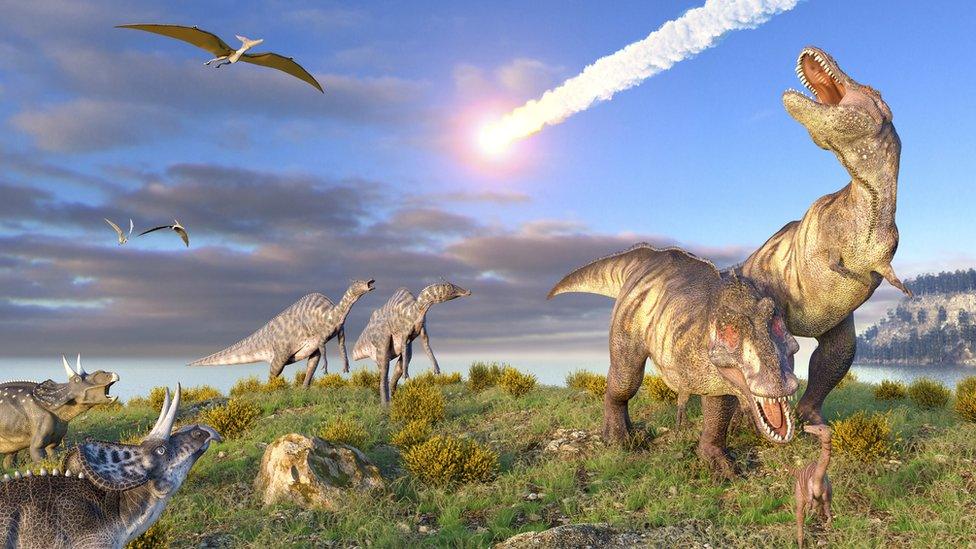Dinosaurs: How did they cope with the cold weather?
- Published
- comments

The dinosaurs were wiped out by an asteroid 65 million years ago
Scientists studying dinosaur fossils have discovered one feature that helped early dinosaurs become the dominant species - their feathers.
At this time, at the end of the Triassic era, a mysterious mass extinction event linked to vast volcanic eruptions sent much of the world into cold and darkness.
Unable to cope with these unfamiliar conditions, more than three-quarters of land and marine species were wiped out - but not the dinosaurs, whose thick covering of feathers helped to keep them warm.
After this, they were able to take advantage of new territories and move from becoming a minority group to those who were in charge.
The research has been published in journal Science Advances.
Why did the dinosaurs have feathers?
Anchiornis huxleyi is a feathered dinosaur with this image made based on fossils found in China dating from the Jurassic
The first dinosaurs are thought to have come about more than 230 million years ago, when most of Earth's land made up a supercontinent called Pangaea.
They would have lived in the south where temperatures were warm, but rather than ruling the roost, dinosaurs would only have made up a small proportion of the population with other species.
But it was when dinosaurs ventured further north to colder regions that they began to gain control of more land.
Footprints of the animals and stone deposits from north-west China show dinosaurs ended up there, where they became adapted to the cold in polar region.
This meant that when the land temperature dramatically changed at the end of the Triassic period they were able to cope in a way other creatures could not, taking advantage of new territories.
It would have been hard for many animals to survive extremely harsh conditions of extreme cold
"The key to their eventual dominance was very simple," said Paul Olsen, the lead author on the study at the Lamont-Doherty Earth Observatory at Columbia University. "They were cold-adapted animals. When it got cold everywhere, they were ready, and other animals weren't."
An international team of researchers began by examining dinosaur footprints from the Junggar Basin in Xinjiang, in China.
These showed that dinosaurs lurked along shorelines at high latitudes. In the late Triassic, the basin lay well within the Arctic Circle, at about 71 degrees north.
But the scientists also found small pebbles in the normally fine sediments of the basin, which once held several shallow lakes. The pebbles were identified as ice-rafted debris, meaning they were carried away from the lakesides on sheets of ice before falling to the bottom when the ice melted.
Together, the evidence suggests dinosaurs not only lived in the polar region, but thrived despite freezing conditions.
